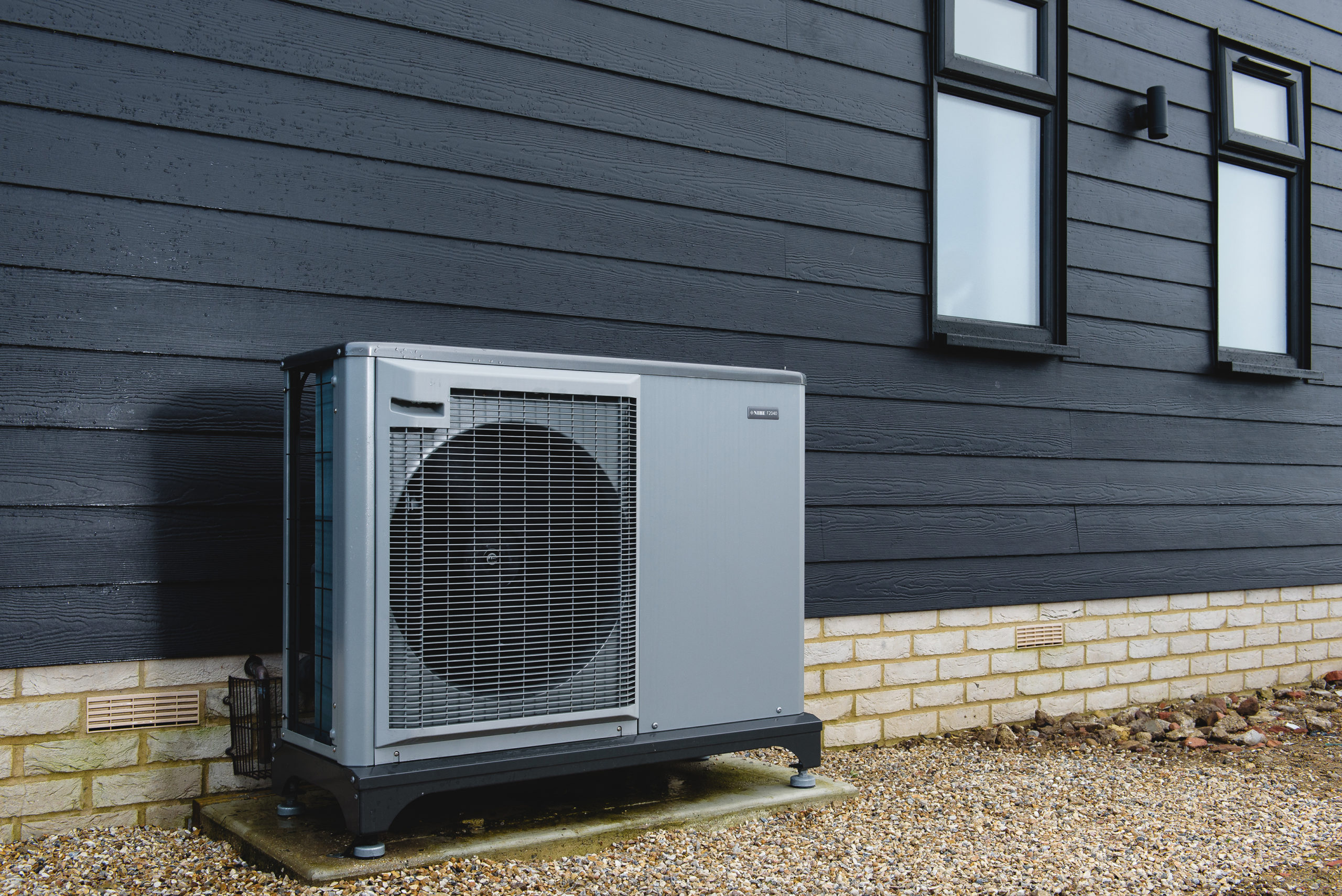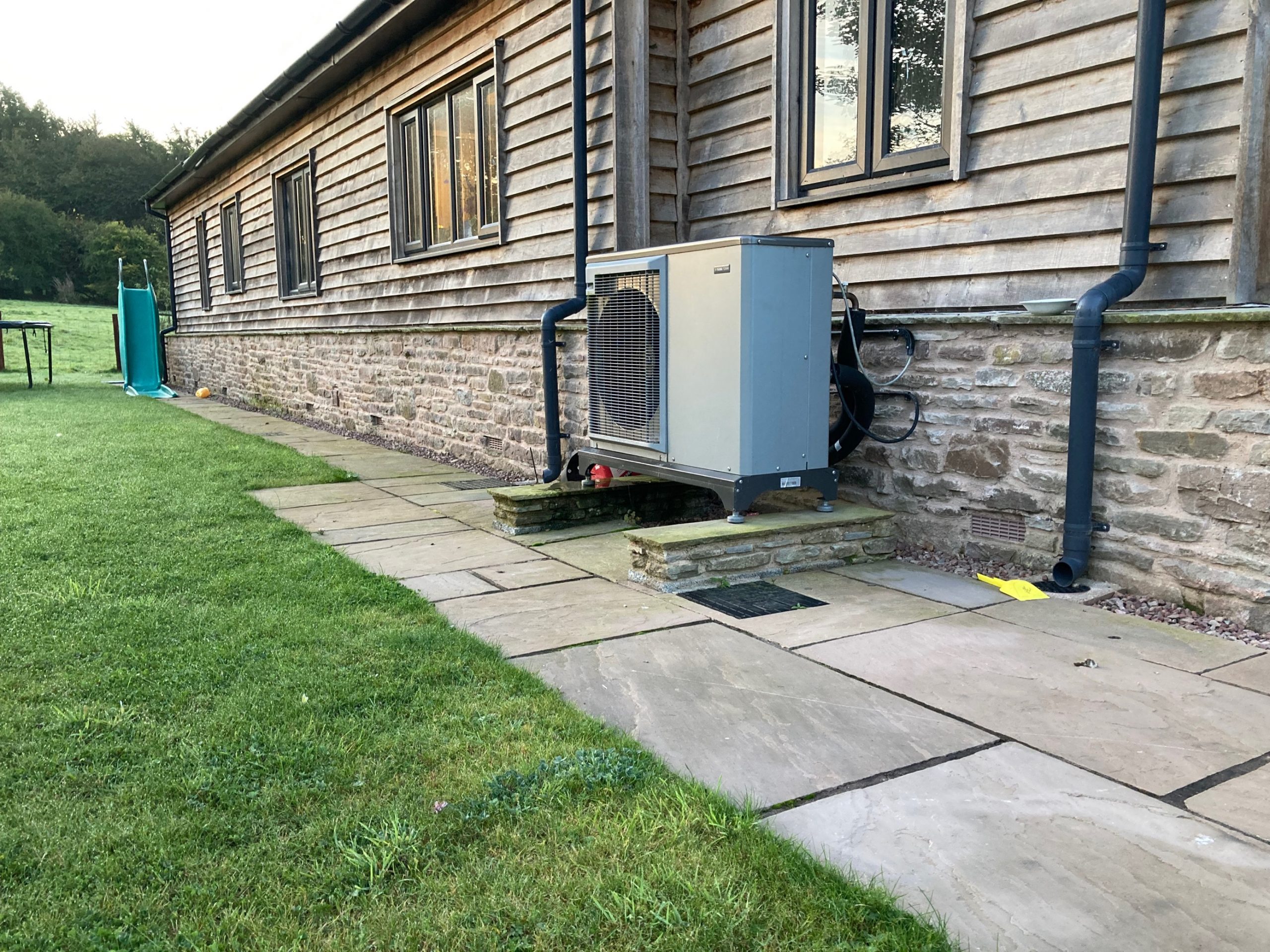This article explains the key factors for calculating the correct size air source heat pump for heating and cooling a home in the UK. Credit: Nu-Heat For most homes in the UK, an air source heat pump between 6kW and 8kW is recommended. This size range can comfortably heat a 3-4 bedroom house. Smaller homes may only need 4kW-5kW, while larger houses might require 10kW or more. In our experience, the majority of UK homes are well served by air-source heat pumps in the 6-8kW range. This provides sufficient heating capacity for most properties while being energy efficient. We recommend getting professional advice to ensure your heat pump is correctly sized. Oversizing can reduce efficiency and increase noise. Undersizing may not meet your heating needs. With proper sizing and installation, an air source heat pump is a smart investment to reduce your home’s carbon footprint. When determining what size air source heat pump you need for your home, the first step is calculating your home’s heat loss. This estimate of how much heating power your home requires is essential for choosing an appropriately sized system. Some key factors that impact heat loss calculations include: There are heat loss calculator tools available online that can estimate your home’s heat loss based on these factors. Or you can hire an assessor to professionally calculate your home’s heat loss requirements. Knowing the heat loss is the basis for determining what size air source heat pump you need. A general guideline is to choose a heat pump that can provide 1.5 times your calculated heat loss, to ensure your system can keep up even in cold weather. Credit: Energy Saving Trust Beyond heat loss, the climate where you live affects what size air source heat pump you need. Colder regions require more heating capacity than warmer ones. The typical heating design temperature used by installers in the UK is -3°C. But in some northern areas, heat pumps may need to provide sufficient heating even at -10°C or below. Checking historical temperature data for your postal code can indicate the lowest temps your area commonly experiences. An undersized heat pump risks being unable to warm your home adequately on very cold days. It’s wise to choose a unit rated to handle lower temperatures than your area typically sees. You also need to consider that air source heat pump performance drops as outdoor temperatures fall. Most heat pumps lose about 1°C in heating capacity for every 1°C drop in outside temperature. So in areas with frequent subzero days, a larger capacity pump is advisable. Consulting with qualified local heating installers is recommended when deciding on a heat pump size. Their experience with your area’s conditions can guide the ideal system sizing to keep your home comfortably warm year-round. When replacing an old heating system with an air source heat pump, look at the existing setup for clues on capacity needs. If your current boiler or furnace struggles to warm the house on cold days, an equally sized heat pump may also fall short. Upgrading to a larger capacity system can ensure sufficient heating. You can find the BTU rating of your current heating system to compare with heat pump models. Going up a size or two may be prudent in colder climates. A home’s insulation impacts heating needs too. Poor insulation means heat escapes rapidly, increasing demand on the system. So an undersized heat pump paired with inadequate insulation multiplies the chance of insufficient heating. Conducting an energy audit helps determine your insulation levels. Upgrading insulation where needed, like in the attic and exterior walls, enables reducing the heat pump size. The less heat loss, the smaller the system can be. But in homes with excellent insulation, relying on a smaller unit to save money may backfire. A right-sized heat pump running longer provides better humidity control and air circulation than short cycles of an oversized system. Selecting the proper heat pump capacity for your home’s needs ensures efficient, cost-effective operation. Oversizing leads to short cycling, which reduces humidity control. Undersizing risks insufficient heating on frigid days. To size the system, calculate your home’s heat loss in BTUs/hour. Factors like house size, insulation, windows, climate, and number of occupants determine heat loss. An HVAC contractor can perform a detailed calculation. As a rule of thumb, allow 20-30 BTUs per square foot for moderately cold climates. Colder regions need 30-35 BTUs. Multiply the home’s square footage by the BTU per square foot factor to estimate capacity. Compare your heat loss total against the BTU output of heat pump models. Focus on the 47°F rating to ensure sufficient cold weather performance. Select a unit with a max BTU output at least 20% over the calculated heat loss. Mitsubishi, Fujitsu, and other brands offer a wide range of capacities. Consult manufacturers’ sizing guidelines too for specific recommendations. With some advance planning, you can choose the properly sized air source heat pump to provide warm, efficient heating for your home. Beyond capacity, consider convenience and performance-enhancing options when selecting a system: Consider how these features align with your needs and budget. The right options ensure your new air source heat pump performs optimally for years to come. The size of the heat pump needed depends on factors like your home’s size, insulation, and heating requirements. A professional can assess your home and recommend the right size. As a general rule, allow 1kW of heat pump capacity per 10 square meters of floor space. For a typical 3-4 bedroom home in the UK, a 6-8kW air source heat pump is usually sufficient. Larger, older homes may need a 10-12kW heat pump. Consider your heating needs and get advice from an installer. A 6kW air source heat pump can typically heat a medium to large-sized room of 14-20 square meters comfortably. For larger rooms, a higher output heat pump would be recommended. Radiators may need to be upsized by 25-30% compared to a gas boiler system since heat pumps operate at lower temperatures. An installer can advise on the correct radiator sizes for your heat pump system. In conclusion, the most common size of air source heat pump installed in UK homes ranges from 4kW to 12kW, with 6-8kW suitable for a typical 3-4 bedroom house. The size required depends on the home’s heating requirements, taking into account its size, insulation and existing radiators. Consulting a qualified installer is advisable to determine the optimal heat pump size for your property. Correct sizing is key to ensuring your heat pump operates efficiently and keeps your home comfortably warm.
What Is the Right Size for an Air Source Heat Pump?

Key Points
Our Opinion
Calculate Your Home’s Heat Loss
Factor in Local Climate Conditions

Consider Existing Heating System and Insulation
Choose the Right Heat Pump Power Output
Select Any Additional Features
FAQ
How do I know what size air source heat pump I need?
What size heat pump should I get?
What size room will a 6kW heat pump heat?
How big do radiators need to be for an air source heat pump?
Conclusion
